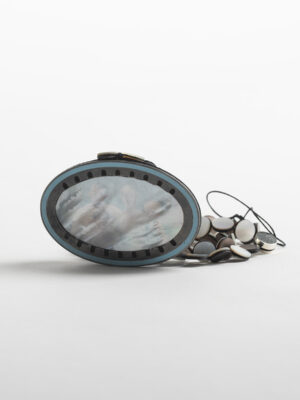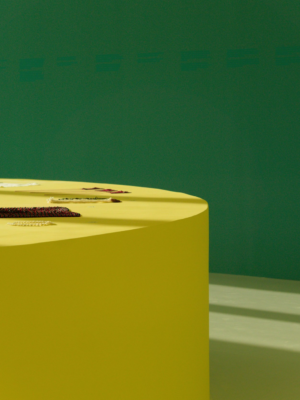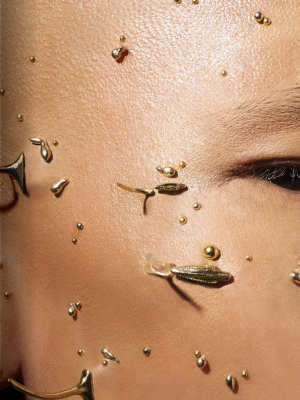
Born into a family of five, Sophia’s life begins in 1816. Her father is Johannes de Bruijn and her mother is Cornelia van Lutsenburg. Johannes works for the Commissariat of Military Affairs, and his job requires the De Bruijn family to move house regularly. They move between Zwammerdam, Overveen and Amsterdam. Little is known about Sophia’s youth. Years later, in 1851, we find Sophia lodging with her sister Anna in a house on Amstelveld. Also residing in that same house is Jonkheer Augustus Pieter Lopez Suasso (1804-1877), her future husband.
Augustus is the only son of physician Diego and Sara Lopez Suasso, raised in the comfortable surroundings of a house on Nieuwe Herengracht, 45. Augustus receives private tuition and passes his gymnasium exams at Latin School in 1820. It is unclear whether he ever attended university. He has the luxury of being able to live off his investments for the rest of his life.
It is probably around this period that Augustus and Sophia fall in love; although another thirteen years pass before they can marry. The religious scruples of Augustus’s father, Diego Lopez Suasso, form the principal barrier. Sophia is a Dutch Reformed Protestant. There is also the question of status: the wealthy, titled Lopez Suassos have been part of Amsterdam’s Jewish patrician class for decades. This probably also plays a significant role. It is only after Diego’s death in 1859 that the path is clear for the couple to marry.
Augustus and Sophia marry on 7 April 1860. For their honeymoon, they tour southern Europe. To start, they travel down to tried and trusted Paris, where one of the places they visit is the cemetery of Pêre La Chaise. After Germany, Austria and Hungary, they spend a month in Istanbul. Taking the steamer Sophia – underlined by Augustus in his journal – they cross the Bosphorus on 22 July 1860 towards the city. He writes ‘Sunday, 22 July 1860, at half past five, arrive at the entrance to the Bosphorus. Here for the next two hours nature presents a splendid spectacle with Constantinople forming the crown.’ They visit the city’s tourist attractions, including the mosques and the Grand Bazaar. The newlyweds also take walks in the city and the nearby countryside.
Augustus reflects on the unique privilege of being able to visit the city: ‘It is with a sense of gratitude for having been able to see so much of beauty and rarity when we leave Constantinople.’ From Istanbul the couple proceed via Athens to northern Italy, and on to cities such as Barcelona, Seville and Madrid before returning through France – to Amsterdam on 5 May 1861. Besides being an exceptionally long journey, it is also an expensive one, as Augustus’s cashbook reveals. In total, their honeymoon costs the couple 7,000 guilders: a small fortune in those days.

Sophia’s collection of precious objects includes over three hundred items: eighteenth- and nineteenth-century pocket watches, fob watches, gold music boxes, red coral bracelets and diamond rings. Few letters or notes have survived, so we know little about the source of this passion for collecting. Nevertheless, Sophia keeps a copious record in her notebooks of everything she acquires.
Watches disguised as jewellery: Sophia clearly had a weakness for these. Her collection of fob pocket watches includes many inspired by natural history: a butterfly, an elephant, a strawberry and even a chestnut. It is only on closer inspection that the piece turns out to be a watch: the clock face hidden behind a wing or visible only once the lid flips open.
Over twenty-five of the watches with matching chain acquired have remained in the collection. They are a splendid reflection of the Romantic Period in which different historical styles merge together. With the development of the wristwatch in the early twentieth century, watch and chain often become separated, which makes Sophia’s items all the more unique. An example of this combination is a Swiss watch made around 1875 with a matching chain in the shape of a harp. The whole piece is encrusted in diamonds and pearls.


Only once in her notebook does Sophia tell us when and where she has bought an object. She describes no. 42 in her list of watches: ‘A gold bracelet set with gems which can be screwed out for a jewel to be placed, from the 1867 Paris Exhibition.’ She is referring to the Exposition Universelle. From the journal kept by Augustus of their travels, it is apparent that they are in Paris for the occasion. They are not the only ones: around six million people attend the exhibition. In fact the bracelet is just one of several items they buy: ‘So in Paris we bought a light lady’s case of which I made use of a side compartment, leaving my own case with some of my wife’s clothes in Paris and sending her case which was by now extremely heavy back to Amsterdam with various items we had bought.’ That case would doubtless have contained this bracelet.
In her notebooks, Sophia generally limits her descriptions to a one-line summary of an object’s principal features, such as form and decoration. Sometimes she mentions the technique of a mechanism or a specific jewel. One object has an extensive description. Among the watches, no. 39 is described as follows: ‘A superb rare notebook with a watch and five second hands with a splendid enamel depiction of Geneva set in jewels, with a reverse enamel showing the Holy Family after a painting by Raphael, in a red leather case’. This notebook dates from around 1870, made by the famous Geneva firm of Henry Capt.

The collection includes several objects by the celebrated Swiss brand Patek Philippe, including a miniature remontoire watch decorated with diamonds in the shape of a daisy. Yet the highlight of the collection is without doubt a singing bird box made by the same Geneva firm in 1866. Sophia provides an extensive description of this music box in her notebook under no. 24 in the Curiosities section: ‘A gold box superbly engraved above with an enamel village from which a bird emerges chirping and flapping its wings, opening its mouth while singing and turning its head’.
At her death in 1890, her collection is left to the city of Amsterdam on condition that her home is opened to the public as a museum. The price of a ticket is one guilder. However, since her house is too small, the collection is moved to the new Stedelijk Museum, originally known as the Suasso Museum. From Saturday, November 11th, all these beautiful objects can be seen at Cromhout House.

OBSESSED! Jewellery in the Netherlands is a festival that unites the best events focussing on jewellery – exhibitions, symposia, fairs, book presentations and open studios – into one intriguing programme, put together by Current Obsession.
OBSESSED! runs throughout the whole month of November’17, in various cities across the Netherlands, accompanied by a special free edition of Current Obsession Paper and an interactive webpage.
Translated from Dutch by Sam Herman
Gold! Sophia Lopez Suasso’s Watches and Jewellery
10.11.2017
Cromhouthuis
Herengraght 366, 1016 CH, Amsterdam
Monday – Closed
Tue-Sun – 11:00-17:00



